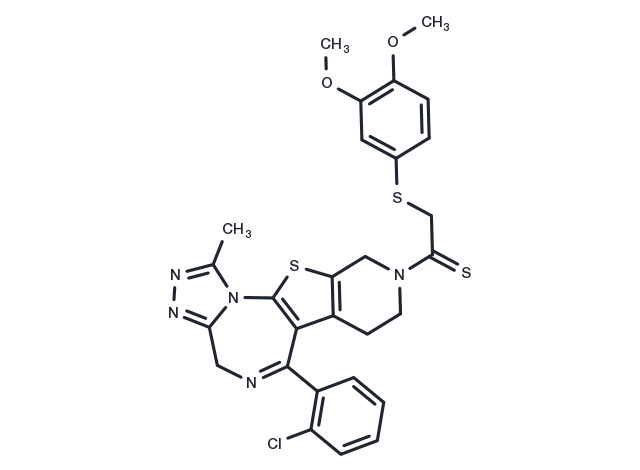Powder: -20°C for 3 years | In solvent: -80°C for 1 year


BN 50739 is an antagonist of platelet-activating factor (PAF). BN 50739 suppresses certain cardiac arrhythmias. PAF is released from ischaemic myocardium and may contribute to initiation of ischaemia-induced ventricular fibrillation (VF)

| Pack Size | Availability | Price/USD | Quantity |
|---|---|---|---|
| 25 mg | 8-10 weeks | $ 2,120.00 | |
| 50 mg | 8-10 weeks | $ 2,780.00 | |
| 100 mg | 8-10 weeks | $ 3,700.00 |
| Description | BN 50739 is an antagonist of platelet-activating factor (PAF). BN 50739 suppresses certain cardiac arrhythmias. PAF is released from ischaemic myocardium and may contribute to initiation of ischaemia-induced ventricular fibrillation (VF) |
| Synonyms | BN50739, BN-50739 |
| Molecular Weight | 596.19 |
| Formula | C28H26ClN5O2S3 |
| CAS No. | 128672-07-1 |
Powder: -20°C for 3 years | In solvent: -80°C for 1 year
You can also refer to dose conversion for different animals. More
bottom
Please see Inhibitor Handling Instructions for more frequently ask questions. Topics include: how to prepare stock solutions, how to store products, and cautions on cell-based assays & animal experiments, etc.
BN 50739 128672-07-1 BN50739 BN-50739 inhibitor inhibit
